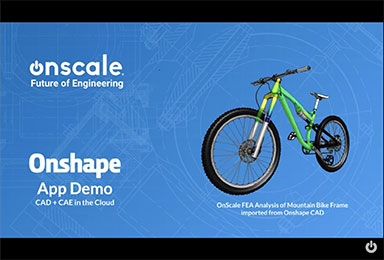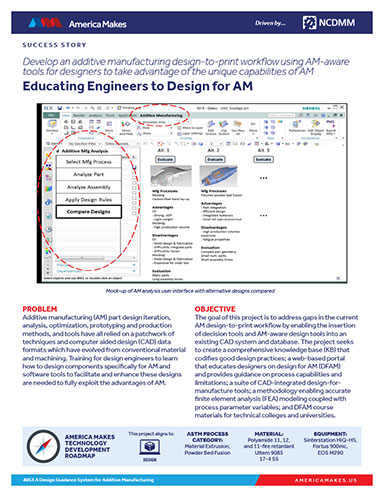Latest in Finite Element Analysis FEA
Finite Element Analysis FEA Resources


Latest News
January 1, 2019
As you journey from the CAD world into simulation, you will quickly become familiar with an age-old saying. You don’t know what you don’t know. Depending on the software vendors of your choice, you will have a wide selection of analysis tools at your disposal. After attending training or learning at a self-pace, you may be asking which type of analysis you should perform. How do you know if your engineering problem requires a deeper dive into more advanced studies? There is no replacement for experience; however, developing a strategy on how you implement use of these tools will be instrumental to your success. Before considering strategy, let’s explore the common swath of tools available inside the simulation toolbox.
Static Linear Analysis

Commonly referred to as static analysis, in most cases this is where you will hit the ground floor running for structural work. Static analysis operates under the principle that loads are applied slow enough to rule out the effects of dynamic behavior, the physical displacement of the problem being studied is relatively small, and the material applied is linear elastic. Materials that are linear elastic will return to their original shape with loads removed, and are operating in the linear range of the stress-strain curve. If any of these terms are new, check out your local library or used bookstore for a material science textbook that will explain physical properties of materials.
So why start with static? There are several reasons, but the most important ones are that it is less computationally demanding on the computer to establish the preprocessing phase of the analysis, as well as an initial assessment as to if any nonlinearities may exist given the initial loads and constraints applied. In short, it’s easy to process a solution and get a rough estimate as to the scope and depth of the engineering problem.
Static Nonlinear Analysis
Tackling a static solution first, the results may indicate that a nonlinear analysis is required to more accurately depict the problem. With a solid understanding of the limitations of a static analysis, you may have identified concerns such as: geometric, material and boundary nonlinearities that exist, requiring further investigation. For example, if conducting a study where the part or assembly is made of steel operating in the plastic region of the stress-strain curve, and once the load is removed permanent deformation occurs—just like a paperclip being bent.
This topic could be an entire article on its own, but a nonlinear analysis will break down the solution into finite pseudo time steps to maintain a convergent path yielding a solution. Consider this in mathematical terms of solving for slope at a point on a curved line. Slope varies at every point, so we could create incremental time steps allowing us to describe the slope at every increment on the line. From careful observation, you can start concluding that every problem has some aspect of nonlinear behavior. The determination of whether it is substantial enough to make an impact on the results will come in time.
Modal Analysis
If your engineering problem requires analysis of whether your part or assembly will adversely react to specific harmonics, this will be your go to. Or maybe it’s necessary to understand how an engine mount would handle vibrations coming from a motor? Commonly referred to as a frequency analysis, this tool will allow you to understand the dynamic behavior of rigid body modes, frequencies of these modes and mass participation factor where multiple bodies are present. Pay careful attention to the capabilities of this type of analysis, as they vary, vendor to vendor.
In wrapping up this month’s conversation of the different types of tools available in FEA, it may be apparent that we left out a few of the simulation tools such as thermal dynamics and specialized analysis such as fatigue and topology optimization. Next month we will continue the conversation with how these other types of tools factor into the spectrum of FEA analysis.
Subscribe to our FREE magazine, FREE email newsletters or both!
Latest News
About the Author
Donald Maloy is a consultant analyst based in the greater Boston area. He also works as a certified simulation and mechanical design instructor for a software reseller.
Follow DERelated Topics




